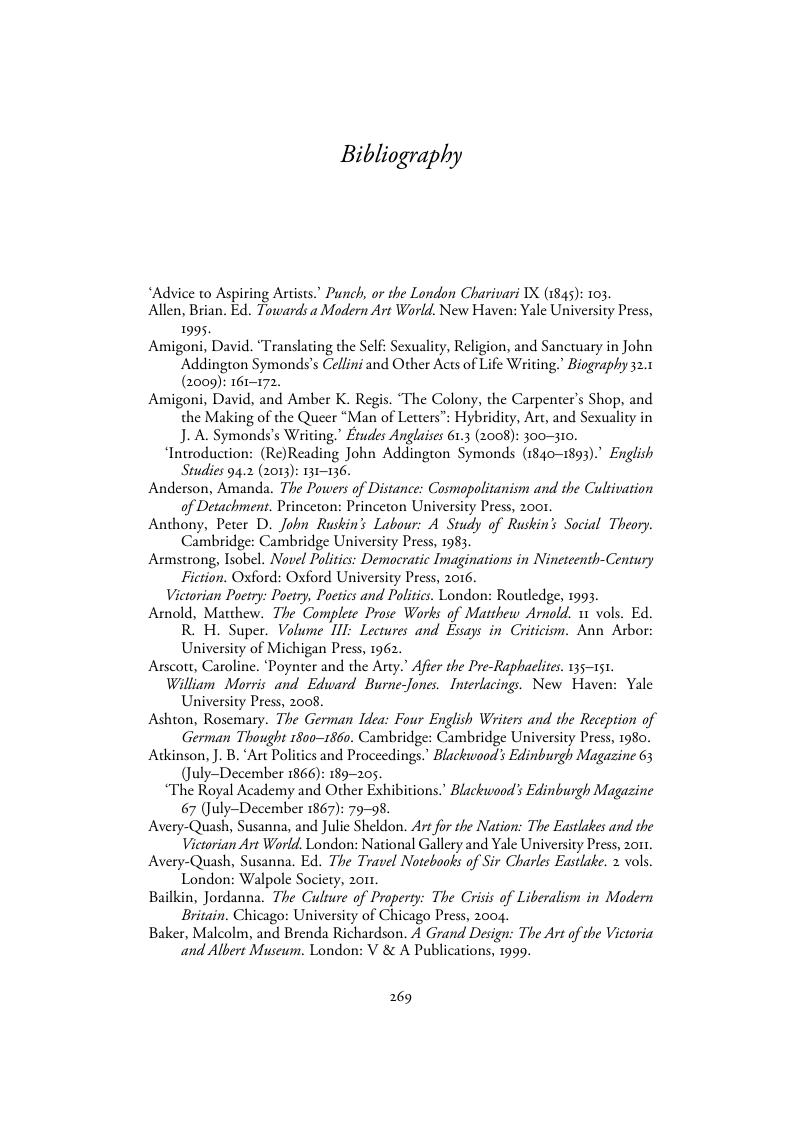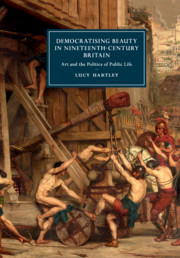Book contents
- Democratising Beauty in Nineteenth-Century Britain
- Cambridge Studies in Nineteenth-Century literature and culture
- Democratising Beauty in Nineteenth-Century Britain
- Copyright page
- Dedication
- Contents
- Illustrations
- Acknowledgements
- Introduction
- Chapter 1 ‘Of Universal or National Interest’: Charles Eastlake, the Fine Arts Commission, and the Reform of Taste
- Chapter 2 Reconstituting Publics for Art: John Ruskin and the Appeal to Enlightened Interest
- Chapter 3 The Pleasures and Perils of Self-Interest: Calculating the Passions in Walter Pater’s Essays
- Chapter 4 Figuring the Individual in the Collective: The ‘Art-politics’ of Edward Poynter and William Morris
- Chapter 5 The Humanist Interest Old and New: John Addington Symonds and the Nature of Liberty
- Conclusion
- Notes
- Bibliography
- Index
- Cambridge Studies in Nineteenth-Century literature and Culture
- References
Bibliography
Published online by Cambridge University Press: 26 July 2017
- Democratising Beauty in Nineteenth-Century Britain
- Cambridge Studies in Nineteenth-Century literature and culture
- Democratising Beauty in Nineteenth-Century Britain
- Copyright page
- Dedication
- Contents
- Illustrations
- Acknowledgements
- Introduction
- Chapter 1 ‘Of Universal or National Interest’: Charles Eastlake, the Fine Arts Commission, and the Reform of Taste
- Chapter 2 Reconstituting Publics for Art: John Ruskin and the Appeal to Enlightened Interest
- Chapter 3 The Pleasures and Perils of Self-Interest: Calculating the Passions in Walter Pater’s Essays
- Chapter 4 Figuring the Individual in the Collective: The ‘Art-politics’ of Edward Poynter and William Morris
- Chapter 5 The Humanist Interest Old and New: John Addington Symonds and the Nature of Liberty
- Conclusion
- Notes
- Bibliography
- Index
- Cambridge Studies in Nineteenth-Century literature and Culture
- References
Summary

- Type
- Chapter
- Information
- Democratising Beauty in Nineteenth-Century BritainArt and the Politics of Public Life, pp. 269 - 286Publisher: Cambridge University PressPrint publication year: 2017



